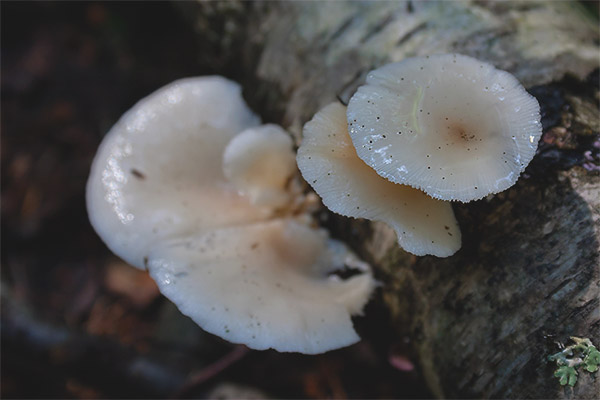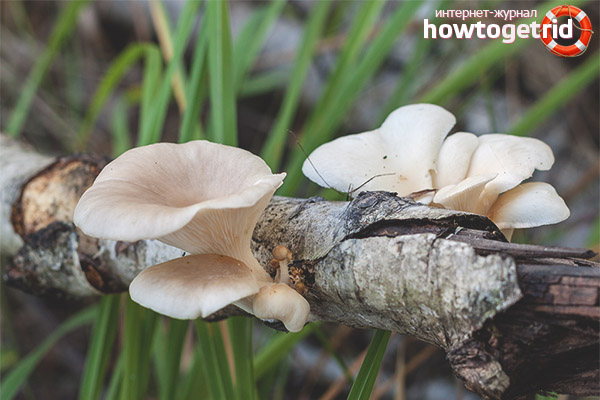The content of the article
The oyster pulmonary (Pleurotus Pulmonarius) belongs to the Oyster family and the Veshenkov family. It is considered the most prominent species from the rest of this family. Young mushrooms are used in the preparation of various culinary dishes. Its characteristic feature is a hat of white or ivory color. It also has other names - such as spring oyster mushroom, beech and whitish. This representative does not have a particularly catchy color, but the shape of the mushroom itself looks elegant and beautiful.
External characteristics
The external structure of the fungus itself is divided into a cap and pedicle with characteristic properties.
Oyster mushroom cap
Its convex-prostrate form is similar to the human auricle, sometimes to a fan because of the edges folded around the perimeter, and the size reaches 2-5 cm in radius.The edges often "wear out" over time, turn into a fringe. From above it is covered with a thin smooth film. Sometimes it happens that the caps are twice as large, but usually mushrooms with this size are already old and unfit for food. Its color varies from white to light gray, which can sometimes be even coffee, turning into darker shades closer to the leg. At the ripened mushrooms, they turn yellow. On the wrong side of it there are a large number of plates of average width, which are directed to the beginning of the legs. They also change their color with the bonnet with aging. In addition, they are light gray spores that Oyster mushroom multiply. The pulp of the fungus is soft, crumbly, airy and snow white.
Mushroom leg
It is located on the side, but occasionally it is in the center of the cap, and resembles a cylinder in shape. Their height is usually no more than five centimeters, and the width is no more than 6-10 centimeters. In young individuals, they are small, only 1-2 centimeters and the same in diameter. Its surface is covered with tiny hairs that feel like a nap to the touch. The color of the legs is light gray.
Oyster mushroom distribution sites
Mushroom picking time
Under favorable weather conditions, they actively begin to grow in whole groups, reaching hundreds of small mushrooms, fused together. To do this, take as much as possible a sharp knife and cut off not one mushroom, but the whole family. There is an opinion that they can be torn off, but this is wrong, since in this way the entire root system is injured. Therefore, the further growth of new mushrooms can be over. Oyster mushrooms bear fruit from late spring to the end of the first month of autumn after heavy rains.
Similar varieties
In nature, there are both edible and inedible analogues. Among them are distinguished:
- Oyster mushroom. It looks more like the rest, but the only significant difference worth paying attention to is the cap. It is much thinner, and its edges are directed toward the earth.
- Oyster Oyster Her cap is much darker, and her leg is massive, so it is very difficult to remove a mushroom from a tree trunk. Although it is edible, its taste is not too bright and only young individuals are allowed to cook.
- Oyster mushroom It can be easily distinguished from the pulmonary due to the villi at the edges of the cap of the fungus, but the color is the same as the pulmonary.
- Pleurocibella serving. You should definitely distinguish it with oyster mushroom, since pleurocibella is a poisonous fungus, which in no case can not be eaten. You can distinguish it by its unpleasant smell and fragile structure. In some countries, it is considered edible, but there have been many cases of poisoning after ingestion.
Edibility of pulmonary oyster mushrooms
It is permissible to use, as it belongs to the third subgroup of mushrooms. It includes conditionally edible mushrooms, which can not be eaten in its raw state, but after a good heat treatment, you can safely eat them.As practice shows, oyster mushroom does not possess such bright taste as, for example, boletus, cep and others. It is worth consuming young mushrooms, because the older they are, the harder the pulp.
Video: oyster pulmonary (Pleurotus pulmonarius)












To send